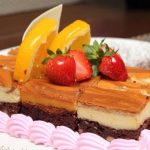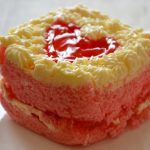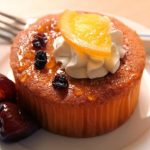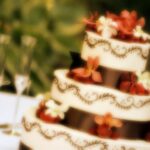Are you looking to learn how to make decoration for cake? Cake decoration plays a crucial role in transforming a simple cake into an exquisite work of art. It allows bakers to unleash their creativity, adding flair and personality to their creations. Whether it’s a birthday, wedding, or any special occasion, the right decorations can make your cake truly stand out and leave a lasting impression on your guests.
To embark on your cake decorating journey, it is essential to have the right tools and materials at hand. From piping bags and tips to fondant cutters and embossers, these supplies are the building blocks necessary to bring your decoration ideas to life. Understanding different types of frosting and icing is also key, as they serve as the base canvas for your decorative elements.
In this article, we will delve into various techniques such as creating smooth frosting bases, mastering piping skills for intricate designs, working with fondant for 3D decorations, and exploring themed decoration ideas for different occasions. By the end of this guide, you will be equipped with the knowledge and inspiration needed to elevate your cakes with stunning decorations that are sure to impress any audience. Let’s dive in.
Essential Tools and Materials Needed for Cake Decoration
When it comes to creating stunning cake decorations, having the right tools and materials is essential. From simple swirls to intricate designs, the key to successful cake decorating lies in using the proper equipment. Some of the essential tools needed for cake decoration include a turntable for easy spinning, an offset spatula for smooth frosting application, piping bags and tips for intricate designs, and a bench scraper for creating clean edges on cakes.
In addition to tools, various materials are crucial for different types of cake decorations. For buttercream frosting, ingredients like butter, powdered sugar, vanilla extract, and food coloring are necessary. If you’re working with fondant, make sure to have cornstarch or powdered sugar for dusting, gel food coloring for vibrant shades, and a rolling pin for even flattening. Being prepared with these tools and materials will help you execute your decoration ideas successfully.
Whether you’re a beginner or a seasoned baker looking to up your cake decoration game, having the right tools and materials is the first step towards creating beautiful confections. Investing in quality supplies can make a significant difference in the outcome of your creations. So gather your equipment, stock up on essential materials, and get ready to learn how to make decoration for cake that will impress your friends and family with both taste and aesthetics.
| Tools | Materials |
|---|---|
| Turntable | Butter |
| Offset spatula | Powdered sugar |
| Piping bags and tips | Vanilla extract |
| Bench scraper | Food coloring |
Different Types of Frosting and Icing for Cakes
When it comes to cake decoration, the type of frosting and icing used can truly make a difference in the final look and taste of the cake. There are various options to choose from, each offering unique textures and flavors that can complement different types of cakes.
Buttercream frosting is a popular choice for its smooth and creamy texture, making it ideal for creating a base layer or intricate designs on cakes. It is also versatile, allowing for easy coloring and piping for decorations.
Whipped Cream Frosting
Another option for cake decoration is whipped cream frosting, which is light and airy with a subtle sweetness. It is perfect for those who prefer a less sweet option compared to buttercream. Whipped cream frosting works well with fruits, making it an excellent choice for fruit-filled cakes or summer-themed desserts. This type of frosting requires refrigeration to maintain its texture, so it’s important to consider storage when using whipped cream as your cake decoration.
Fondant Icing
Fondant icing offers a smooth and clean finish on cakes, making it ideal for creating intricate designs or 3D decorations. Fondant can be rolled out into thin sheets and draped over the cake to create a seamless look.
It also holds up well in different temperatures, making it suitable for cakes displayed at events or parties. Working with fondant may require practice to master techniques such as smoothing out air bubbles or creating detailed shapes, but the results can be stunning and professional-looking.
Step-by-Step Guide on How to Create a Smooth Frosting Base on a Cake
Creating a smooth frosting base on a cake is essential for achieving a professional and polished look. With the right technique and tools, you can easily turn your cake into a canvas for your creative decorations. Here is a step-by-step guide on how to create a smooth frosting base that will serve as the perfect foundation for your cake decoration:
- Start by preparing your cake by leveling the top and ensuring it is completely cooled before applying any frosting.
- Choose your preferred type of frosting, whether it’s buttercream, cream cheese, or ganache. Each type has its own unique texture and taste, so pick one that complements your cake flavors.
- Apply a thin layer of frosting, known as the crumb coat, to seal in any crumbs and create a smooth surface for the final layer of frosting. Chill the cake in the refrigerator for about 15-30 minutes to set the crumb coat.
- Once the crumb coat is set, apply a thicker layer of frosting using an offset spatula or bench scraper. Start from the top and work your way down the sides, smoothing out any imperfections as you go.
- Continue to add more frosting as needed until you achieve a smooth and even finish on your cake. Take your time and be patient with this process to ensure a flawless result.
Mastering the art of creating a smooth frosting base is crucial in learning how to make decoration for cake that truly stands out. Practice makes perfect, so don’t be afraid to experiment with different techniques and textures to find what works best for you. Remember that each cake is unique, so embrace imperfections as part of the creative process and have fun decorating.
Various Piping Techniques for Creating Intricate Designs and Patterns
Piping techniques are a crucial skill for any cake decorator looking to create intricate designs and patterns on their cakes. By mastering the art of piping, you can elevate your creations to new levels of beauty and sophistication. Whether you’re looking to add delicate details or bold statements, piping allows you to unleash your creativity and personalize your cakes in unique ways.
Types of Piping Tips
There are various types of piping tips available that can help you achieve different effects on your cakes. Some common types include round tips for outlining and writing, star tips for creating borders and rosettes, petal tips for floral designs, leaf tips for adding foliage, and ruffle tips for textured decorations. Experimenting with different tips and techniques will allow you to discover new possibilities for decorating cakes.
Basic Piping Techniques
One of the simplest piping techniques is creating a border around the edges of a cake using a round tip. Start by applying even pressure to the piping bag while moving it steadily along the edge of the cake. To create rosettes or swirls, use a star tip and apply gentle pressure while rotating the tip in a circular motion.
For more intricate designs like flowers or leaves, practice varying the pressure on the piping bag to control the shape and size of each element. With practice and patience, you’ll be able to master these basic techniques and move on to more advanced designs.
Advanced Piping Designs
Once you’ve mastered basic piping techniques, you can start experimenting with more advanced designs such as basketweave patterns, lace effects, scrollwork, and stringwork. These designs require precision and attention to detail but can truly elevate your cake decoration skills to a professional level.
Don’t be afraid to challenge yourself with new techniques and push your creativity boundaries. By exploring different piping styles and practicing regularly, you can create stunning works of art that will impress everyone who sees them.
Tips for Working With Fondant and Creating 3D Decorations
Working with fondant can be a fun and creative way to add intricate details and 3D decorations to your cakes. Fondant is a versatile icing that can be molded and shaped into various designs, making it perfect for adding a personalized touch to your baked creations.
To start with, you will need the following tools and materials: fondant, powdered sugar for dusting, rolling pin, various shaping tools (such as cookie cutters or sculpting tools), food coloring (if desired), and shortening to prevent sticking.
Before working with fondant, make sure your hands are clean and dry. Dust your work surface with powdered sugar to prevent the fondant from sticking. Knead the fondant until it is smooth and pliable before rolling it out with a rolling pin.
Use the shaping tools to create different shapes and figures, or use cookie cutters for uniform designs. To attach fondant decorations to a cake, lightly brush the back of the decoration with water or edible glue before gently pressing it onto the frosted cake.
Creating 3D decorations with fondant opens up a world of possibilities for adding flair and personality to your cakes. From sculpted flowers and figurines to intricate lace patterns and geometric shapes, there are endless ways to use fondant to elevate your cake decorating skills.
Experiment with different textures, colors, and designs to see what works best for your vision. With practice and patience, you can master the art of working with fondant and create stunning 3D decorations that will impress your friends and family.
| Tips for Working With Fondant | Creating 3D Decorations |
|---|---|
| Make sure hands are clean when working with fondant | Experiment with different textures, colors, and designs |
| Dust work surface with powdered sugar | Use shaping tools or cookie cutters for design elements |
| Knead fondant until smooth before rolling out | Create sculpted flowers, figurines, lace patterns etc. |
Creative Ideas for Themed Cake Decorations for Birthdays, Weddings, and Other Special Occasions
Are you looking to impress your guests with beautifully decorated cakes for special occasions like birthdays, weddings, or other celebrations? Look no further. In this section, we will explore some creative ideas for themed cake decorations that will surely make your cakes stand out and leave a lasting impression on your loved ones.
To create stunning themed cake decorations, it is essential to have the right tools and materials on hand. Here are some items you may need to get started:
- Various piping tips and bags
- Fondant in different colors
- Edible glitter or sprinkles
- Food coloring gels
- Decorative molds and cutters
One popular theme for birthday cakes is using characters or themes from beloved movies, TV shows, or books. You can create a Frozen-themed cake with icy blue frosting and snowflake decorations made of fondant. For a wedding cake, elegant floral designs using buttercream frosting or fondant can add a touch of romance and sophistication. Don’t forget to personalize the decorations to suit the individual’s interests and preferences.
Another fun idea for themed cake decorations is incorporating seasonal elements into your designs. For instance, a fall-themed cake could feature rich autumn colors like deep oranges, browns, and reds with edible leaf accents. A beach-themed cake can be adorned with sugar seashells, edible sand made from crushed graham crackers or cookies, and fondant palm trees swaying in the breeze. Be creative and think outside the box to bring your themed cake decorations to life.
With these creative ideas in mind, you can now start experimenting with different techniques and decoration methods to turn ordinary cakes into extraordinary works of art that will delight both the eyes and taste buds of your guests. Whether it’s a birthday party, wedding reception, or any special occasion, personalized themed cake decorations are sure to make a memorable statement. Let your imagination run wild as you explore how to make decoration for cake truly special.
Troubleshooting Common Decoration Mistakes and How to Fix Them
Decorating cakes can be a fun and fulfilling experience, but sometimes, things don’t go as planned. Whether it’s a lumpy frosting, a broken fondant decoration, or a design that just didn’t turn out right, common decoration mistakes can happen to even the most experienced bakers. However, with a few tips and tricks up your sleeve, you can easily fix these mishaps and salvage your cake masterpiece.
One common mistake when decorating cakes is getting air bubbles trapped in your frosting or icing. This can create an uneven finish on your cake and ruin the overall look. To fix this issue, simply use a toothpick or small offset spatula to gently release the air bubbles by poking them and smoothing out the surface. Another trick is to lightly tap the sides of the cake with your hand to help release any trapped air.
Another frequent issue that bakers encounter is when their fondant decorations crack or break while applying them to the cake. To avoid this problem, make sure your fondant is rolled out evenly and not too thin. If you do end up with cracked fondant decorations, you can try using a small amount of water or edible glue to mend the cracks together. Be careful not to use too much liquid as it can dissolve the fondant.
Lastly, if you find that your piping designs are not coming out as expected or are looking messy, don’t worry. Practice makes perfect when it comes to piping techniques. You can always scrape off any unwanted designs and start fresh. For more intricate designs, consider practicing on parchment paper before piping directly onto your cake. With patience and practice, you’ll soon master the art of piping beautiful designs on your cakes and cupcakes.
Conclusion
In conclusion, cake decoration is not just about making a cake look pretty; it is an art form that allows you to express your creativity and add a personal touch to your baked creations. By learning how to make decorations for cakes, you can transform a simple dessert into a stunning masterpiece that will impress both visually and in taste.
With the right tools, materials, and techniques, anyone can become a skilled cake decorator and bring their imaginative designs to life.
One of the most important aspects of cake decoration is experimenting with different techniques and styles. From basic piping skills to intricate fondant sculpting, there are endless possibilities when it comes to decorating cakes.
Whether you’re planning a birthday celebration, wedding reception, or any special occasion, the way you decorate your cake can set the tone for the event and leave a lasting impression on your guests. So don’t be afraid to think outside the box and try new ideas to make your cakes truly unique and beautiful.
As you continue on your journey of mastering the art of cake decoration, remember that practice makes perfect. Don’t be discouraged by mistakes or mishaps along the way – they are all part of the learning process. Keep honing your skills, exploring new techniques, and pushing your creative boundaries.
With dedication and passion, you can develop your own signature style and create stunning edible works of art that will delight both eyes and taste buds. So go ahead, unleash your creativity, experiment with different decoration techniques, and let your imagination run wild as you adorn your cakes with beauty and charm.
Frequently Asked Questions
How to Make Cake Decorating Items?
Making cake decorating items involves various techniques depending on the item you want to create. For example, fondant decorations require rolling out fondant, cutting shapes, and using molds for intricate designs. Royal icing decorations involve piping delicate details using a piping bag and tips.
How to Make a Cake Good for Decorating?
To make a cake good for decorating, it is important to start with a firm and stable base. This can be achieved by using a sturdy cake recipe that holds its shape well, such as a pound cake or a dense sponge cake.
The cake should also be properly leveled and chilled before decorating to ensure smooth and even surfaces for frosting.
What Are the 5 Kinds of Cake Decorating?
There are 5 main kinds of cake decorating techniques: buttercream decorating, fondant decorating, royal icing piping, gum paste flower making, and edible image printing. Buttercream decorating involves using buttercream frosting to create swirls, rosettes, borders, and other designs on cakes. Fondant decorating involves covering cakes with fondant icing and creating molded decorations like flowers or figures.
Royal icing piping is the art of creating intricate designs using royal icing through piping bags and tips. Gum paste flower making entails shaping delicate flowers from gum paste for realistic floral decorations on cakes. Edible image printing allows decorators to print custom images or designs onto edible paper using food-grade ink for easy application on cakes.

Welcome to my blog about home and family. This blog is a place where I will share my thoughts, ideas, and experiences related to these important topics. I am a stay-at-home mom with two young children. I hope you enjoy reading it! and may find some helpful tips and ideas that will make your home and family life even better!





